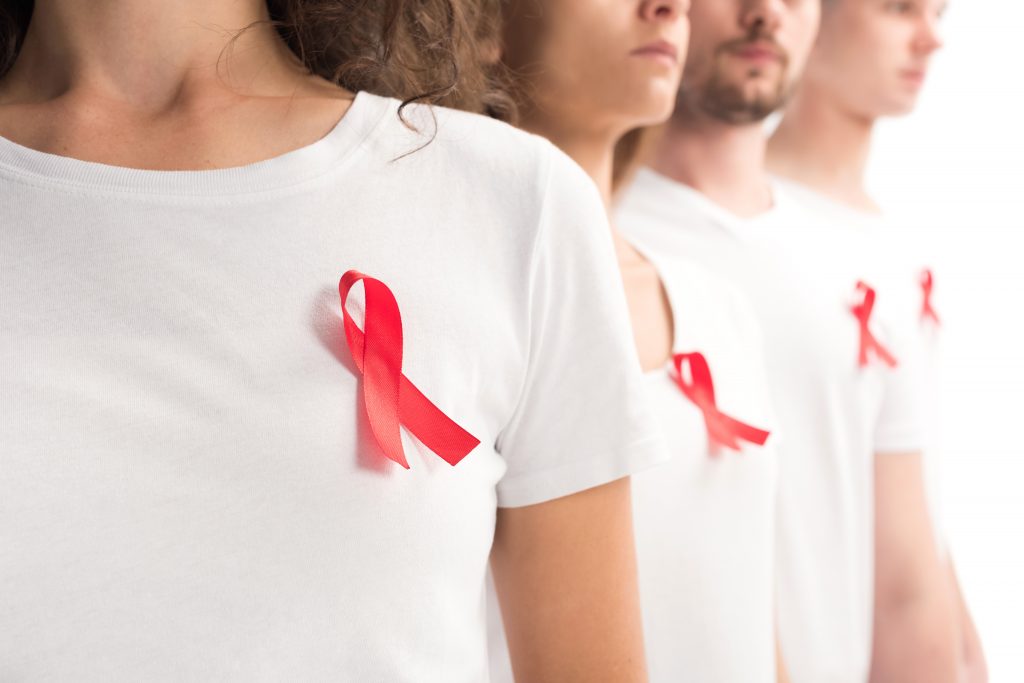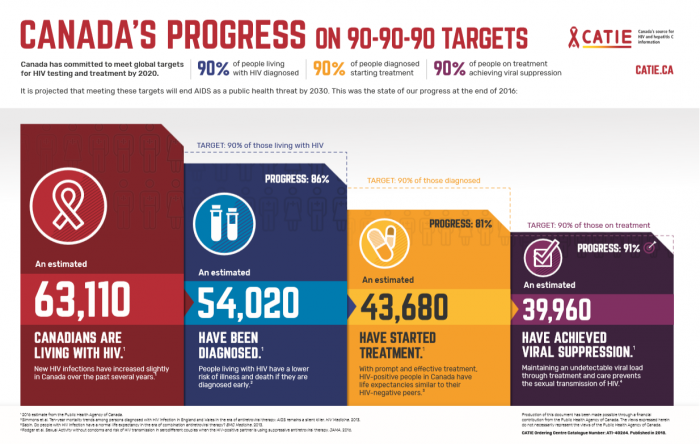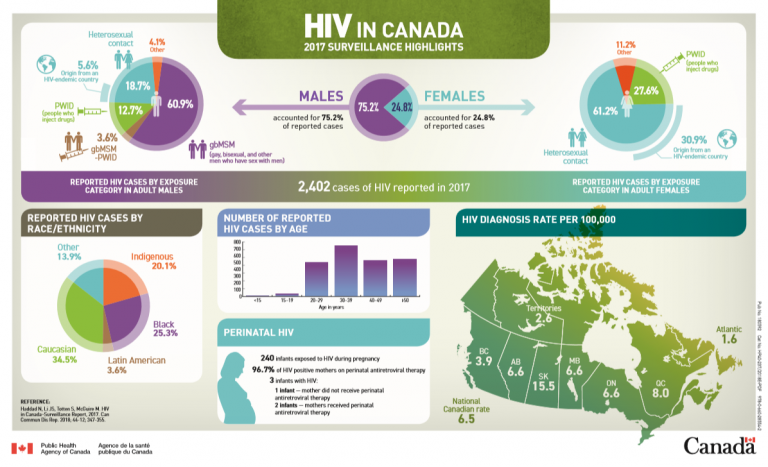
HIV in Canada Today
90-90-90
90-90-90 is a set of goals created in 2017 by UNAIDS. By 2020, the global goal is to have 90% of people living with HIV to be diagnosed, for 90% of those diagnosed to be on antiretroviral treatment, and for 90% of the people on treatment to have achieved an undetectable status, meaning that they are not able to pass the virus on to anyone else.
In a report published in July 2018, the Canadian government estimated that 86% (from a possible range of 78-94%) of people living with HIV are diagnosed. 81% (from a possible range of 75-87%) of the diagnosed people living with HIV are on treatment, and 91% (from a possible range of 87-95%) of those people on treatment have reached an undetectable status.
However, we need to focus not only on the 90-90-90 of people diagnosed, on treatment, and who have achieved an undetectable status, but also the 10-10-10 who are not, such as people living in rural or remote areas who lack access to HIV services. HIV will only truly ever be eradicated in Canada when all Canadians have access to long-term HIV care.
The statistics
- 6.6 people are infected with HIV in Canada every day.
- 2,402 Canadians were diagnosed with HIV in 2017, a 3% increase from 2016 and a 17% increase since 2014.
- Ontario, Quebec, and British Columbia had the highest number of new HIV cases in Canada in 2017.
- 30-39 year-olds represented the highest number of new HIV cases in 2017 (31.2%).


